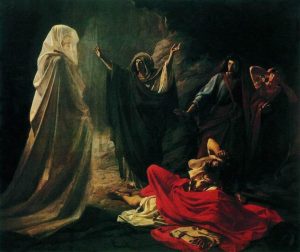
In the previous post we began to discuss the fundamental difference between the Bayesian and frequentist approaches to probability. A Bayesian defines probability as a subjective belief about the world, often expressed as a wagering proposition. “How much am I willing to bet that the next card will give me a flush?”
To a frequentist, however, probability exists in the physical world. It doesn’t change, and it isn’t subjective. Probability is the hard reality that over the long haul, if you flip a fair coin it will land heads up half the time and tails up the other half. We call them “frequentists,” because they maintain they can prove that the unchanging parameter is fixed and objectively true by measuring the frequency of repeated runs of the same event over and over.
Fairies and witches
But does objective probability really exist? After reading several books focused on subjective probability published in the past few decades, I couldn’t help noticing that Bruno de Finetti‘s Theory of Probability stands as a kind of watershed. In the preface, he says that objective probability, the very foundation of frequentism, is a superstition. If he’s correct, that means it isn’t just bad science; it’s anti-science. He writes: Continue reading “What’s the Difference Between Frequentism and Bayesianism? (Part 2)”
